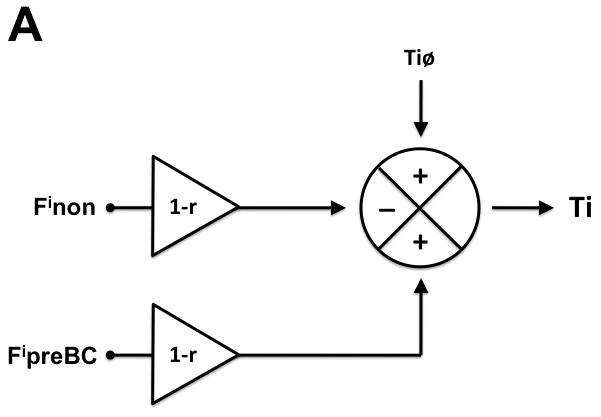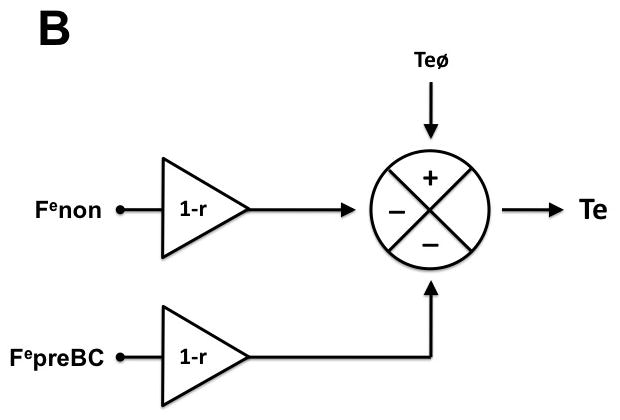Figure 4.


Hypothetical model of preBötzinger Complex (preBC) and non-preBC inputs to inspiratory and expiratory phase duration to explain the observed systemic opioid effects on respiratory phase duration. A: Intrinsic drive that maintains the inspiratory phase (Tiø) is modified by input from the preBC (FipreBC) as well as by input from outside the preBC (Finon) resulting in the observed inspiratory duration (Ti). Under control conditions, preBC input increases (+) and non-preBC input shortens (−) inspiratory duration. Intravenous (IV) remifentanil reduces both inputs by the factor (1-r) resulting in an increase in inspiratory duration. Local reversal of the remifentanil effect with naloxone in the preBC restores the preBC input to Ti (FipreBC), which leads to an additional increase in inspiratory duration. Additional reversal of the inhibition of non-preBC input (Finon) with IV naloxone reduces inspiratory duration to baseline. B: Intrinsic drive that maintains the expiratory phase (Teø) is modified by input from the preBC (FepreBC) as well as by input from outside the preBC (Fenon) resulting in the observed expiratory duration (Te). Under control conditions, both preBC input and non-preBC input shorten (−) expiratory duration. IV remifentanil reduces both inputs by the factor (1-r) resulting in an increase in expiratory duration. Local reversal of the remifentanil effect with naloxone in the preBC restores the preBC input to Te (FepreBC), which leads to a decrease in expiratory duration. Additional reversal of the inhibition of non-preBC input (Fenon) with IV naloxone reduces expiratory duration to baseline.
